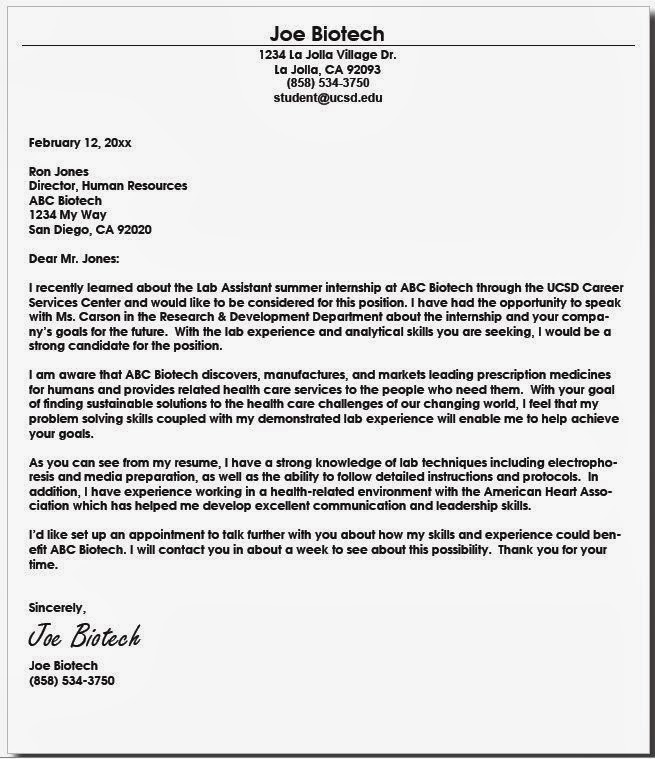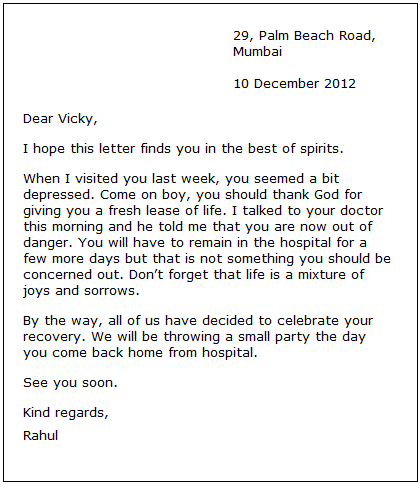Letter writing is time tested and dependable medium of
communication. It has been a means of passing important and secret information
between two persons, parties, departments and even governments. Letters are
also used to express thoughts and feelings, Joys and sorrows. It is
particularly needed when we cannot talk to a person.
TIPS TO WRITE A LETTER
1. Try to avoid padding your letter with unnecessary
information, especially if you're writing a business letter.
2. Try to keep the letter focused on what would interest
the recipient.
3. You can use letters to express gratitude, sympathy,
love, humor, concern and most other emotions.
4. If you're sending a formal or semiformal email, make
sure your email address sounds respectable. A letter from
"sweetstar189" will be taken a lot less seriously than a letter from
"jane.smith."
5. Be as reasonable and polite as possible when you're
writing a complaint letter — if you do, you're a lot more likely to get a
favorable response.
6.Write letters in blue or black ink.
7. If you're printing a formal letter, use a paper
that's heavier than copy paper.
It is important note that a letter becomes a record of
what one has said or committed. Letters also reflect the writer's own taste or
interests.
Example
What Is Letter Format?
There are different letter formats. There are formal,
informal and business formats to name a few. Knowing the type of letter you
need to write is important.
Example
What is a cover letter?
A cover letter is a document sent with your resume to
provide additional information on your skills and experience.

REASONS TO WRITE A LETTER
 The reasons for writing a letter may vary. For
instance, one may write a letter for business, as a condolence, as an inquiry,
for passing information or to simply keep in touch with an old friend. Although
the technology has replaced traditional letters with e-mails, the parts of a
letter still remain the same. Let's take a look at parts of formal and informal
letters and tips to write them effectively.
The reasons for writing a letter may vary. For
instance, one may write a letter for business, as a condolence, as an inquiry,
for passing information or to simply keep in touch with an old friend. Although
the technology has replaced traditional letters with e-mails, the parts of a
letter still remain the same. Let's take a look at parts of formal and informal
letters and tips to write them effectively.
1. Date
Is used to indicate the date the letter was written.
2. Salutation
Also called the Greeting. Use the same name as the
inside address, including the personal title.
3. Body
The body is written as text. A business letter is
never hand written. Depending on the letter style you choose, paragraphs may be
indented. Regardless of format, skip a line between paragraphs.
4. Conclusion
Are the summarizes the body of the letter.
5. Closing
The closing begins at the same horizontal point as
your date and one line after the last body paragraph.
6. Signature
Type or print your name. The handwritten signature
goes above this line and below the close. The signature line and the handwritten
signature are indented to the same column as the close
TYPES
OF LETTER
FORMAL LETTER
FORMAL LETTER
Is a note or piece of writing composed in a
professional format. Formal letters could be used to relate to business or
other professional issues.
1. Addresses or
Your address: The return address
should be written in the top right-hand corner of the letter.
2. Date: You write this on the right or the left on
the line after the address you are writing to. Write the month as a word.
3. Salutation or greeting : If you do not know the name of the person you
are writing to, use this. It is always advisable to try to find out a name.
4. The content of a formal letter or
Introduction: A short introduction
that states the purpose of the – letter to make an enquiry, complain, request
something, etc.
5. Ending a letter : If you do not know the name of
the person, end the letter this way.
@
Personal letters are letters you write to someone you
know. For example, you might write to a friend, family member, classmate or pen
pal.
EXAMPLE
PERSONAL E-MAIL
An email sent by an employee within an employer's
server but which serve no business purpose.
EXAMPLE
INFORMAL LETTER EXAMPLE
Is a letter that is usually written to a close friend
or an acquaintance. It is also known as a personal letter and this type of
letter do not have 'hard' and 'fast' rules on the format of writing as opposed
to a formal letter, although there is a conventional way of writing it.
EXAMPLE
STEPS TO WRITE AN INFORMAL LETTER
1. Address and date:
Should be written in the right hand corner.
2. Salutation: The most common salutation in an
informal letter is "Dear…….". Note that it is followed by a comma.
Example: Dear Mimi,
3. The content of an informal letter or Introduction:
The first paragraph will consist of an introduction which will give the
recipient an idea about what you are writing to them with a short summary of
the main topic of your letter.
Is usually used when writing from one company to
another, or for correspondence between such organizations and their customers,
clients and other external parties. The overall style of letter will depend on
the relationship between the parties concerned.
It is used to transmit virtually every type of correspondence the daily conduct of business requires. Simple messages, memos and letters, complex reports, tables of data, graphs and charts, blueprints, pictures, you name it. If it can be generated by, scanned into, or downloaded onto a computer, it can be electronically sent through cyberspace to another computer.
EXAMPLE
4. Ending a letter In informal letter writing; you can
end your letter with: Love, Lots of love, Best wishes, Missing you lots, Yours
forever, Yours, Note that it is
followed by a comma.
CLASSIFICATION OF INFORMAL LETTER
BUSINESS LETTER
BUSINESS E-MAIL
It is used to transmit virtually every type of correspondence the daily conduct of business requires. Simple messages, memos and letters, complex reports, tables of data, graphs and charts, blueprints, pictures, you name it. If it can be generated by, scanned into, or downloaded onto a computer, it can be electronically sent through cyberspace to another computer.
EXAMPLE
OTHER TYPE OF LETTER
INVITATION LETTER
Informal invitations are like ordinary letters, though
using more formal language.
A letter of invitation is a written document in
support of a person seeking a visa to enter a foreign country. An invitation
letter may be formal or informal.
STEPS TO WRITE AN INVITATION LETTER
2. You have to begin the letter with name and address
of sender and receiver. Date as to be mentioned.
3. Begin the main body of the letter with salutations.
4. The letter has to give out the purpose in the very
first paragraph.
5. The letter has to give relevant facts like date,
time and venue of the event in the beginning itself.
6. Make sure that the invitees know the way to the
venue
7. Let the invitees know that they have to inform the
organizers whether they will attend the event or not before a specified date.
Give the reader the details about the person whom to contact to confirm their
attendance for the occasion.
8. Proofread the letter thoroughly before sending it
to the invitees. The letter has to be flawless.
9. The letter should use fonts that are professional
and readable.
CLASSIFICATION OF INVITATION LETTER
FORMAL INVITATION LETTER
Are commonly
used by businesses to request the presence of clients or prospective clients at
a special company event. They can also be used to invite guests to deliver
speeches at company conventions and formal meetings. They are distinguished
from personal invitation letters by their formality and the fact that an
organization or corporate unit is inviting the individual to the event, rather
than one person inviting someone else to an event.
INFORMAL INVITATION LETTER
HOW TO SEND A LETTER?
1. Choose an envelope. It is important to find a
suitable envelope for your letter.
2. Put the letter in the envelope and seal it.
3. Address on the letter. Write the recipient's
address in the center of the front of the envelope.
4. Write your return address. In the upper left corner
of the envelope, write your name and address.
FINDING THE CORRECT POSTAGE
2. Purchase an extra postage. The large letters that
are mailed overseas, require extra postage (stamps extra) to reach its
destination.
1. Put your card in a blue mailbox.
2. Place the letter in the mailbox.
3. Take the letter to the post office.
 1.They are personal, showing the recipient you cared
enough to take the time to write them, preferably longhand.
1.They are personal, showing the recipient you cared
enough to take the time to write them, preferably longhand.
ADVANTAGES OF USE A LETTER
 1.They are personal, showing the recipient you cared
enough to take the time to write them, preferably longhand.
1.They are personal, showing the recipient you cared
enough to take the time to write them, preferably longhand.
2. They can be a keepsake for the recipient. Maybe the
world is changing, but there is nothing comparable to a "love
letter." Electronic just doesn't do it.
3. You can show that you mean business. Putting a
"return request" and a "red exclamation point" on an e-mail
is a joke when compared to a handwritten or typed and signed letter in which
you lay out your argument and demand satisfaction.
4. There are
kind of like a newspaper clipping - a bit old school, but you have the
original, which you can keep and refer to and review.
5. They are fun
to send and receive; I write an average of a dozen letters a week to family and
friends.
6. They are
something you get in the mail that is not a bill or junk.
DISADVANTAGES OF USE A LETTER
2. It is bad for the environment as it is cutting down
trees and will add to global warming. It is more eco-friendly to send emails.
THINKING OF A LETTER
 |
ANONYMOUS
|
















